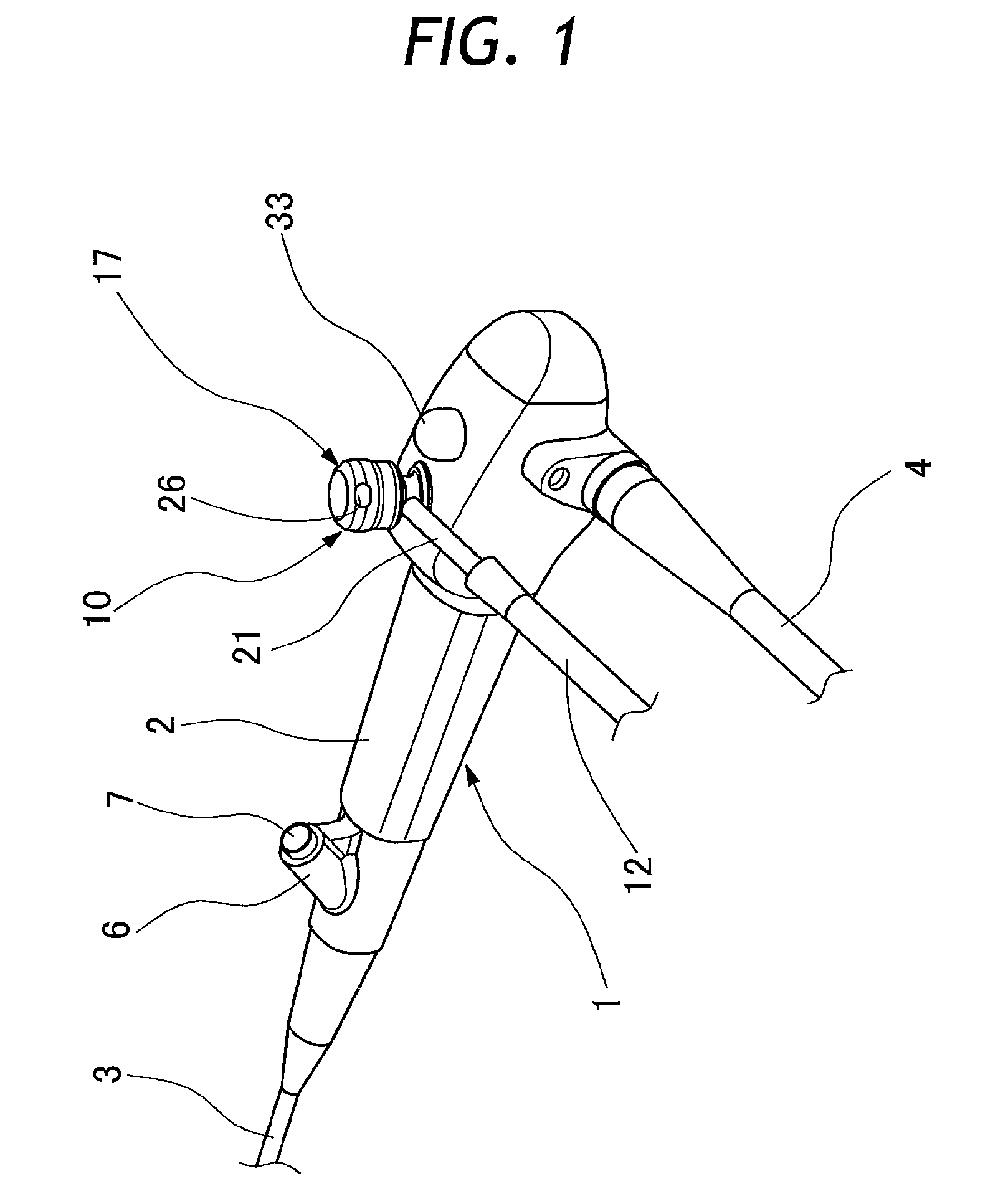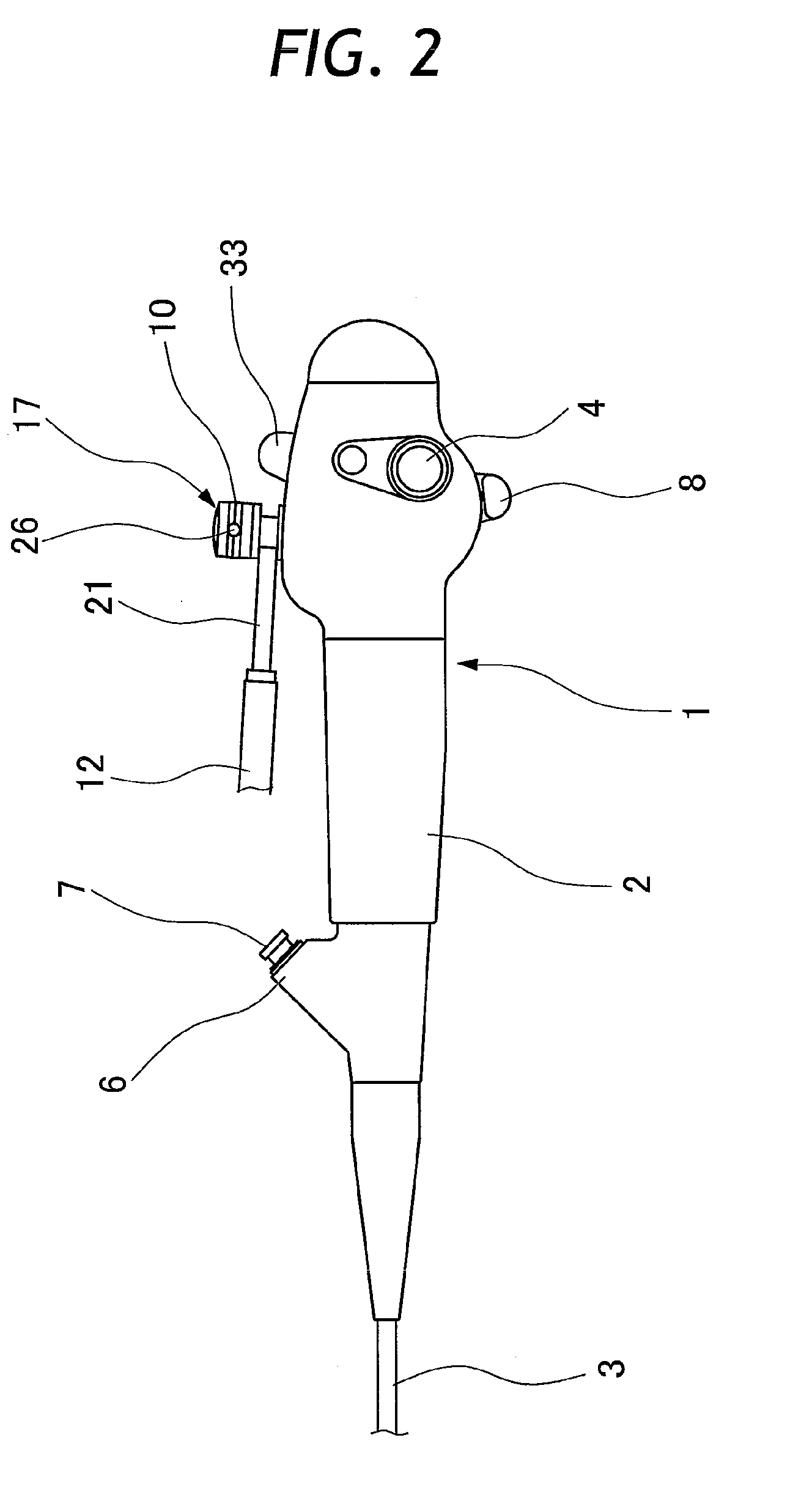Endoscopic aspiration device
a technology of endoscopic aspiration and guide member, which is applied in the field of endoscopic aspiration device, can solve the problems of difficult extraction of valve guide member from valve casing for washing purposes, and achieve the effects of preventing spontaneous dislodgement of valve assembly unit, easy extraction, and convenient disassembly and assembly
- Summary
- Abstract
- Description
- Claims
- Application Information
AI Technical Summary
Benefits of technology
Problems solved by technology
Method used
Image
Examples
second embodiment
[0065]Now, turning to FIGS. 10 through 14, there is shown the invention. In this embodiment, a valve casing and a valve assembly unit are disconnectibly coupled with each other through a coupling mechanism with locking and unlocking functions.
[0066]As shown in FIGS. 10 and 11, a valve casing 100 which is provided on a manipulating head 2 of an endoscope 1 is tapped with an external screw 100a on its outer peripheral surface, and an anchor nut 101 is threaded on the external screw 100a in such a way as to grip a housing 13 of the manipulating head 2 between the anchor nut 101 and a stopper flange 100b which is provided on the side of the valve casing 100. Threaded on the upper end of the valve casing 100 is a stationary flange member 102, which is formed with an upper large diameter portion 102a and a lower smaller diameter portion 102b on its outer peripheral side. The large and small diameter portions 102a and 102b are intervened by a transitory stepped wall surface 102c which is d...
first embodiment
[0067]Substantially in the same way as in the foregoing first embodiment, a valve assembly unit 103 is composed of a valve guide member 104 and a valve member 105. The valve guide member 104 is formed with a detachable flange portion 206. At a predetermined distance from the detachable flange portion 106, a rim fitting portion 107 is provided on an upper portion of the valve guide member 104 to receive a rim portion at the lower end of a skirt portion of a dome-like aspiration trigger member 25. A connector pipe 108 is connected to a reduced diameter portion of the valve guide member 104 between the detachable flange portion 106 and the rim fitting portion 107.
[0068]The valve assembly unit 103 is coupled with the valve casing 100 by inserting a lower portion of the valve guide member 104 into the valve casing 100. A seal member 109 is interposed between the inserted lower portion of the valve guide member 104 and the valve casing 100. On insertion, the valve guide member 104 is push...
PUM
 Login to View More
Login to View More Abstract
Description
Claims
Application Information
 Login to View More
Login to View More - R&D
- Intellectual Property
- Life Sciences
- Materials
- Tech Scout
- Unparalleled Data Quality
- Higher Quality Content
- 60% Fewer Hallucinations
Browse by: Latest US Patents, China's latest patents, Technical Efficacy Thesaurus, Application Domain, Technology Topic, Popular Technical Reports.
© 2025 PatSnap. All rights reserved.Legal|Privacy policy|Modern Slavery Act Transparency Statement|Sitemap|About US| Contact US: help@patsnap.com



